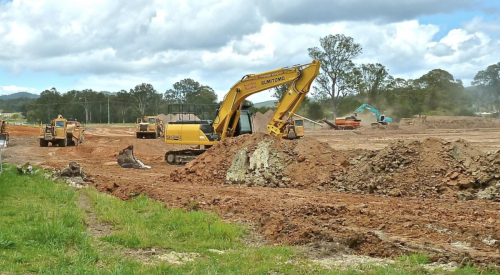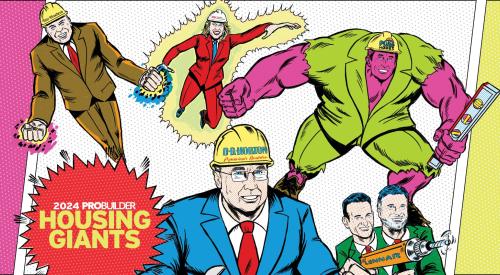 |
|
The housing bust in the seconf half of the Roaring 2000s shows in Giant 400 revenues for this decade and stands in sharp contrast to the first half of the boom that started in the mid-90s. |
The trouble with trying to figure out, now, what kind of decade awaits is that no one wants it to be anything like the decade we're trying to sweep out the door. And yet, especially in terms of the rate of technological change, it almost has to be more like the Roaring 2000s than any other decade in history. Think about that while you're checking e-mails on your new hand-held. We know, for instance, that the flow of information is not likely to slow.
The largest giant builders — those public companies a fair percentage of builders blame for the excesses of this decade — certainly don't want to see an encore. They almost had Wall Street (and many of the rest of us) convinced, coming out of the 1990s, that this kind of volatility couldn't happen.
Some Wall Streeters even tried to sell the idea that the Top 10 builders would eventually build more than half of America's new houses every year. Now it's whispered that half the Top 10 might not make it to 2010. Certainly, the 50,000 closings D.R. Horton hit twice this decade now looks like a high-water mark akin to a 50-year flood.
When we ask builders, analysts and housing industry consultants what they think about the future, they seem to have radically different views. For instance, Colorado-based consultant Chuck Shinn believes recovery will bring drastically different housing products and new kinds of building companies.
"The day of big publics may be over," Shinn offers, "and detached homes, at four to the acre, in
 |
| Giants' land costs, as a percent of average house price, is still going up because houses are still built on lots produced at market peak. Land improvement contribution is declining because builders have slowed new development work. Some analysts believe builders would be well-served to get out of land development entirely in the next decade. |
300-unit subdivisions way out in exurbia, is a product with no future."
Shinn says the public builders should be land developers or builders, but not both. He offers NVR's land-light business model as one alternative, then says the big builders can't see the wave of the future in community development because they are blind to anything that doesn't fit the demands of their production machines.
"We already have land developers taking market share by developing mixed-use projects that put many services within walking distance of homes," Shinn says. "People don't want to drive to Starbucks," he charges. "They want to walk." He believes successful communities in the future will blend commercial and retail space with a 60/40 mix of small-lot detached homes and high-density multifamily, with average prices settling some 30 percent lower than in most of today's developments.
He also believes large private builders, backed by big equity investment funds, will soon be a powerful force and that new technology will drive mass customization into every sales office
San Francisco-based Wachovia Securities stock analyst Carl Reicardt endorses the wisdom of the largest builders taking lessons from NVR as a way to avoid another decade of extreme volatility, such as the charts on these pages show.
 |
|
Selling land was a profit opportunity in the half half of the 2000s builders scrambled to stay ahead of the booming market. Now, land is sold not for profit, but to avoid loss. It's the Old Maid card nobody wants. Land impairments continue to drag down the largest builders. |
"The big public builders know Wall Street cares more about sustainability of growth than a high percentage of change in that rate over time. Wall Street rewards predictability," Reichardt says.
"When you put land in the home building equation as part of the profit center, you throw predictability right out the window.
"It sounds — now — like the other public builders want to reshape their companies to be more like NVR," he says. "But the cynics will tell you it's bull." As soon as the market turns, they will get right back into development, Reichardt charges.
"They can't give up that land margin. These guys are like drunks on a bender. NVR is all about becoming more efficient constructors of housing and getting rid of the risk and volatility associated with land. But these other builders will never do it."
Reichardt, however, has a different vision from Shinn's about the future of housing products. "I don't for a moment think we'll see the end of distant suburban subdivisions," he scoffs. "Even if gas goes to $9 a liter. ... What I don't understand is the beige boxes. Why does the design aesthetic have to be so bad?
"You can see the direction the next generation wants to move," Reichardt says, "and it's modern."
Who's willing to bet Don Horton will go for that idea?
Want more analysis? We've got it for you:
- Sound Retreat for this Year's Giant 400
- Land, Impairments Dog Public Home Builders
- Rental Apartments Poised for Liftoff
- Sun Cuts Clouds Over Manufactured Housing
- View the 2008 Giant 400 List












